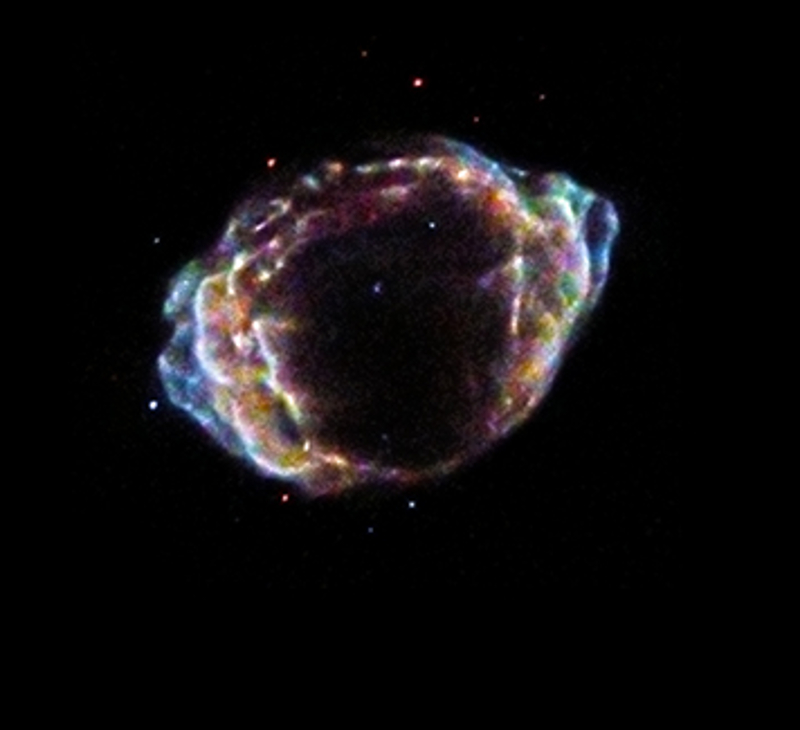
 Credit: NASA/CXC/NCSU/K.Borkowski et al.
Credit: NASA/CXC/NCSU/K.Borkowski et al.
How to Hide a Supernova
It seems hard to hide a supernova, the complete explosive destruction of a star - but evidently that's happened. In 2008 astronomers, using the Chandra X-ray Observatory, found a glowing mass of X-ray emitting gas near the center of the Milky Way. Optical images showed absolutely nothing out of the ordinary, since the remnant is hidden behind a large mass of dust - but X-rays (and radio waves emitted by the remnant) penetrate the dust to reveal the explosion. Oddly enough, as seen from earth, the supernova must have occurred in 1900 (as seen from earth), but was unnoticed by earthly observers it the most recent Milky Way supernova. How many more remain to be discovered? New observing faciliites that can scan large regions of the sky in the optical (like the Zwicky Transient Facility, the Vera C. Rubin Observatory, and the Nancy Grace Roman Space Telescope) along with existing high energy observatories like the Fermi Gamma-ray Space Telescope, the Swift Burst Alert Telescope, and others should help ensure we don't miss any new explosions in our Galaxy.
Published: February 20, 2023
<
HEA Dictionary ● Archive
● Search HEAPOW
● Other Languages
● HEAPOW on Facebook
● Download all Images
● Education ● HEAD
>

Each week the HEASARC
brings you new, exciting and beautiful images from X-ray and Gamma ray
astronomy. Check back each week and be sure to check out the HEAPOW archive!
Page Author: Dr. Michael F. Corcoran
Last modified Monday, 26-Feb-2024 17:45:26 EST


